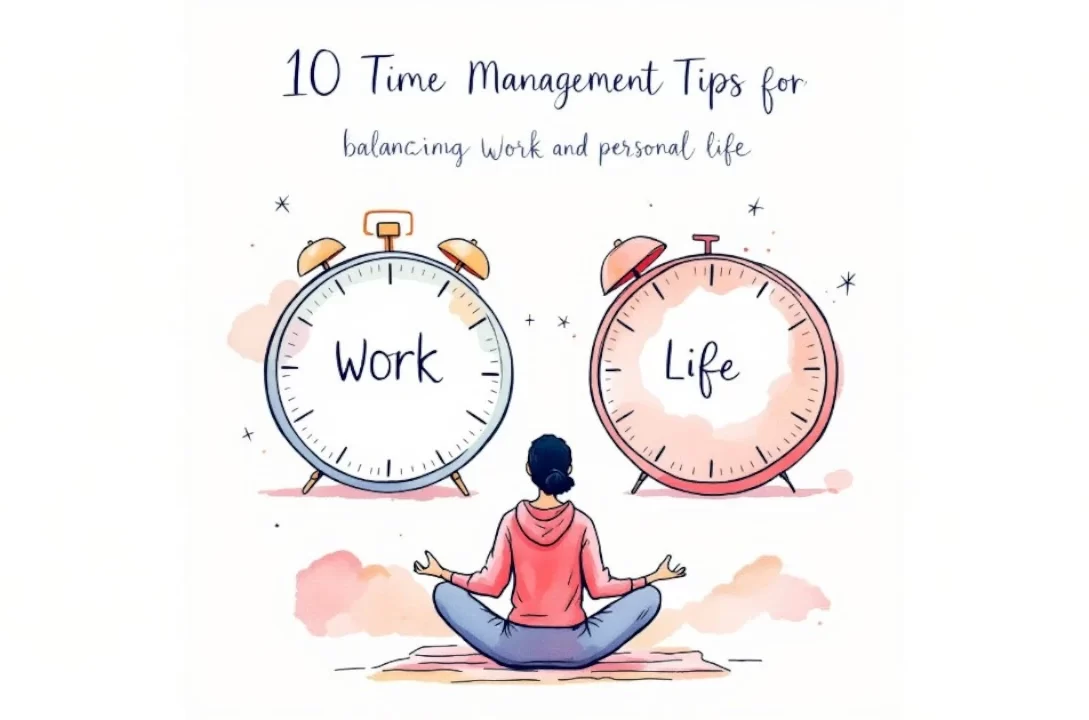Juggling work deadlines, family commitments, and personal time can feel overwhelming. Without proper time management, burnout becomes inevitable. The good news? A few strategic changes can help you regain control, increase productivity, and still enjoy downtime.
In this guide, we’ll explore actionable time management strategies to help you balance work and personal life effectively.
Why Time Management is Crucial for Work-Life Balance
Poor time management leads to stress, missed deadlines, and strained relationships. On the other hand, mastering it allows you to:
- Increase productivity – Get more done in less time.
- Reduce stress – Avoid last-minute rushes and burnout.
- Improve relationships – Spend quality time with loved ones.
- Achieve personal goals – Make time for hobbies and self-care.
Let’s dive into the best techniques to optimize your schedule.
Essential Time Management Strategies
Prioritize Tasks with the Eisenhower Matrix
Not all tasks are equally important. The Eisenhower Matrix divides them into four categories:
- Urgent & Important – Do these immediately.
- Important but Not Urgent – Schedule these.
- Urgent but Not Important – Delegate if possible.
- Neither Urgent nor Important – Eliminate or minimize.
This method ensures you focus on what truly matters.
Set Clear Daily and Weekly Goals
Vague goals lead to wasted time. Instead, use the SMART framework:
- Specific – Define exactly what you want to accomplish.
- Measurable – Track progress with numbers or milestones.
- Achievable – Set realistic expectations.
- Relevant – Align goals with long-term priorities.
- Time-bound – Assign deadlines.
Use Time Blocking for Better Focus
Instead of multitasking, assign specific blocks of time for different tasks:
- Deep work – 2-3 hours for high-focus tasks.
- Meetings & calls – Batch them to avoid interruptions.
- Personal time – Schedule breaks and leisure activities.
Apps like Google Calendar or Toggl Track can help enforce this structure.
Leverage the Two-Minute Rule
If a task takes less than two minutes, do it immediately. This prevents small tasks from piling up and becoming overwhelming.
Learn to Say No
Overcommitting drains time and energy. Politely decline requests that don’t align with your priorities.
Tools to Improve Time Management
Digital Calendars (Google Calendar, Outlook)
Sync work and personal schedules in one place with reminders for important events.
Task Management Apps (Todoist, Trello, Asana)
Organize to-do lists, set deadlines, and track progress efficiently.
Focus Apps (Forest, Focus@Will)
Minimize distractions with timers and productivity-boosting music.
Automation Tools (Zapier, IFTTT)
Automate repetitive tasks like email sorting and social media posts.
How to Avoid Common Time Wasters
- Limit social media scrolling – Use apps like Freedom or StayFocusd to block distractions.
- Reduce unnecessary meetings – Opt for emails or quick calls when possible.
- Stop perfectionism – Done is better than perfect—focus on progress, not perfection.
Balancing Work and Personal Life
Set Boundaries Between Work and Home
- Designate a workspace – Avoid working from bed or the couch.
- Turn off work notifications after hours – Protect personal time.
Schedule Personal Time Like a Meeting
Self-care isn’t optional—block time for exercise, hobbies, and relaxation.
Delegate When Possible
At work, assign tasks to teammates. At home, share chores with family members.
Maintaining Long-Term Balance
- Review your schedule weekly – Adjust priorities as needed.
- Practice mindfulness – Meditation or journaling helps reduce stress.
- Celebrate small wins – Acknowledge progress to stay motivated.
Frequently Asked Questions
How can I manage time with a hectic job?
Use time blocking, delegate tasks, and set strict work-life boundaries.
Is multitasking effective for time management?
No—it reduces efficiency. Focus on one task at a time for better results.
What’s the best app for time management?
It depends on your needs. Todo list is great for tasks, while Toggl Track helps with time auditing.
How do I stop procrastinating?
Break tasks into smaller steps, use the Pomodoro Technique, and eliminate distractions.
Can time management reduce stress?
Absolutely! A structured schedule prevents overwhelm and improves work-life harmony.
Final Thoughts
Time management isn’t about squeezing more into your day—it’s about working smarter so you can enjoy life without constant stress. By prioritizing tasks, setting boundaries, and using the right tools, you can achieve a healthier work-life balance.
Ready to take control of your time? Start implementing one of these strategies today and notice the difference!
By mastering these techniques, you’ll not only boost productivity but also create more space for what truly matters. Happy scheduling!











